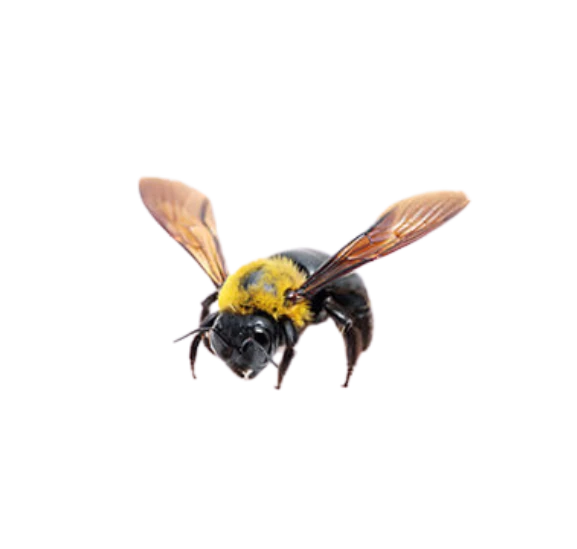Stinging Insects
Stinging insects, including bees, wasps, hornets, and yellow jackets, can be dangerous and cause painful stings. These insects are typically aggressive when their nests are disturbed and can pose a threat to anyone with allergies.

Stinging insects, including bees, wasps, hornets, and yellow jackets, can be dangerous and cause painful stings. These insects are typically aggressive when their nests are disturbed and can pose a threat to anyone with allergies.

Safe for the whole family
Over 10,000 pest-free homes
Year-round protection and availability
Fire Ants
Native to South and Central America they have invaded around the
world. They are incredibly aggressive as a species and have potent stings that help them win battles with native ants. They are known to kill small rabbits and hatchling sea turtles as well as other small animals.
Individual fire ants sting tend to be mild. But you are rarely stung by a single fire ant. Ask anyone who has sat on one of their nest mounds. You can literally be stung by hundreds of ants within a few seconds.
More than 90% of their venom is made up of alkaloids. Which are organic or carbon-containing compounds. The specific toxins in fire ant venom are chemically similar to piperidine, the chemical that makes pepper taste like pepper.
This triggers the release of immune signalling molecules, causes burning, itching pain and a fluid-filled pustule. So while each individual sting may be mild, the combined pain of hundreds of stings is anything but mild.
If you suspect a fire ant problem in or around your house it is recommended that you contact a professional pest control provider to deal with them effectively and safely.
Honey Bee
This is everyone’s favourite pollinator. This is probably the sting that most people have experienced because they are found basically everywhere. While they do not have the most painful stings on the planet they can be deadly.
In fact, in Europe, North America and even Australia bees are deadlier than just about any other venomous animal. That’s because in these places allergic reactions to bee stings claim more lives than snakes, scorpions and spiders combined.
The stings are burning, corrosive but manageable assuming that you are not allergic to them. The burning sensation comes from Melittin, which is a peptide. Basically, a small protein that makes up 40-60% of the venom. Melittin turns on the same pain receptors as heat. So it literally burns causing pain and inflammation.
Yellow Jackets
There are a lot of different wasps people call yellow jackets. They are all social predatory wasps. Like bees, they are some of the most common insects that people get stung by all over the world. So like bees, yellow jacket stings are painful but manageable. However, unlike bees, yellow jackets are capable of stinging multiple times which ups
the pain levels of an attack.
More than 90% of their venom is made up of Amines. A type of organic compound related to ammonia. The venom will often contain histamine, the same stuff that is released when you have an allergic reaction. And serotonin, which is a neurotransmitter involved with regulating your mood.
Both compounds trigger inflammation. The amount of histamine and serotonin in the venom will depend on the species. Eastern yellow jacket venom is 99.4% histamine while German yellow jacket venom is 98% serotonin.
If you suspect that you have a yellow jacket problem in or around your
the property is highly recommended that you contact a pest control
professional to deal with it safely and effectively.
Harvester Ants
Harvester ants get their name from their habit of dragging seeds underground. Which they store in large caverns called granaries. They are native to the southwestern U.S. Their stings are definitely painful.
Not a lot is known about how their venom works. But it is believed that their most likely pain inducer is a small peptide in their venom called barbatolysin. Barbatolysin acts a lot like melodin in the body. But it’s much more effective at killing cells which might explain why stings from these ants hurt more than bee stings.
Harvester Ant venoms are also surprisingly lethal. In theory less than
10 milligrams would kill the average person. However, as ants are pretty small they only inject tiny amounts of venom at a time. At most about 25 micrograms or 1/1000 of a milligram. So it would take several hundred stings to even come close to a potentially lethal dose.
